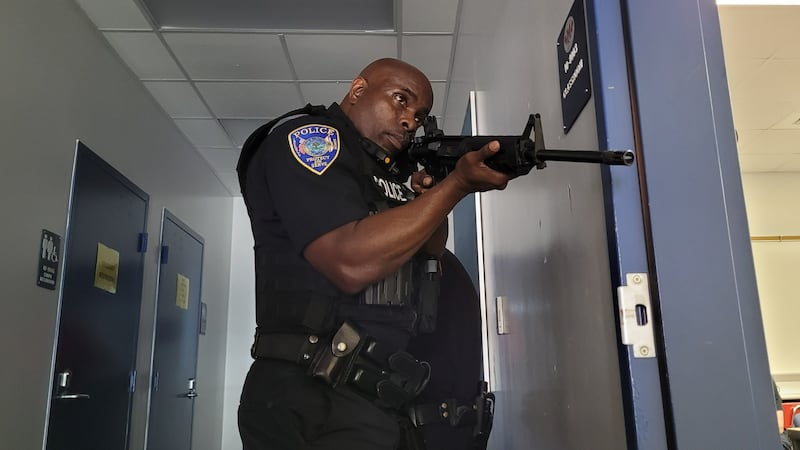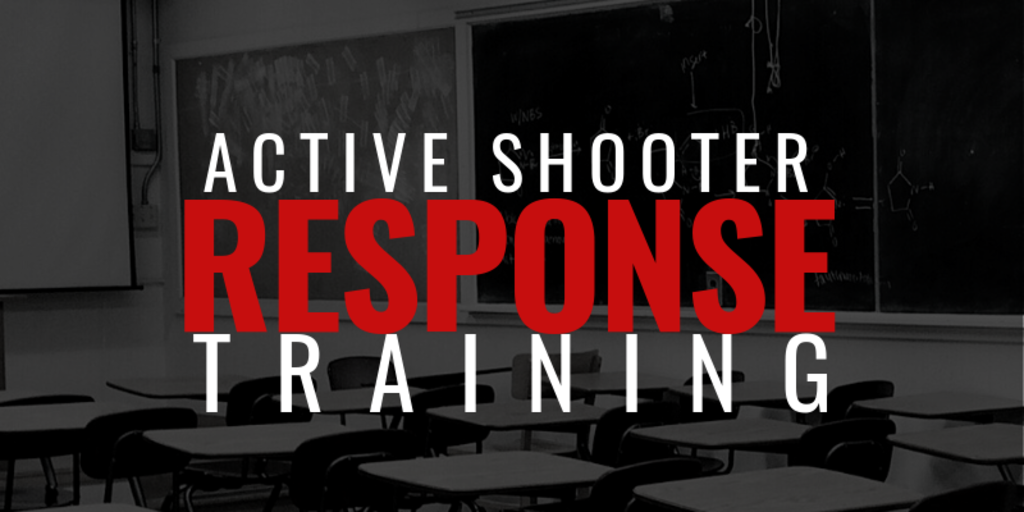Ensuring Public Safety And Security with Advanced Active Shooter Training Techniques
Ensuring Public Safety And Security with Advanced Active Shooter Training Techniques
Blog Article
Implementing Energetic Shooter Training: Finest Practices for Creating a Safe and Prepared Neighborhood Setting
As communities face the disturbing fact of active shooter events, the execution of comprehensive training programs comes to be necessary. An effective strategy hinges on not only the advancement of tailored educational programs that address regional dangers yet also the involvement of diverse stakeholders. By utilizing a range of training methods, communities can make certain that all participants are equipped with necessary skills. Nevertheless, the difficulty exists in preserving a flexible framework that develops with emerging risks. What are the crucial elements that can transform a common training program into a robust model for community strength?

Understanding the Need for Educating
In an age noted by boosting cases of violence in public rooms, recognizing the need for energetic shooter training has actually never been extra vital. Comprehensive training initiatives can furnish participants with the expertise and skills to respond decisively.
Training cultivates a feeling of empowerment and preparedness, allowing people to really feel more secure in their surroundings. The benefits of active shooter training prolong past immediate feedback; they consist of improving communication protocols and improving overall security procedures within companies.
Trick Elements of Effective Programs
Effective active shooter training programs integrate a number of vital components that improve preparedness and reaction abilities. Initially, extensive curriculum advancement is necessary, ensuring that training content is pertinent, evidence-based, and customized to the specific demands of the company or neighborhood. This includes understanding the dynamics of active shooter incidents and the mental influence on people involved.
Second, sensible training situations should be utilized to mimic potential circumstances, enabling individuals to practice decision-making and action techniques in a regulated setting. These drills help with muscle memory and develop confidence among individuals.
Third, an emphasis on interaction protocols is critical. Establishing clear lines of communication amongst regulation enforcement, emergency situation -responders, and participants makes sure worked with actions throughout an incident. Routine updates and correspondence course help keep communication paths clear and effective.
Fourth, continuous evaluation and comments mechanisms need to be incorporated right into the training program - active shooter training. Analyzing the effectiveness of training with individual responses and performance metrics permits constant enhancement
Last but not least, fostering a society of security and preparedness within the community urges alertness and aggressive measures, making certain that people are not only skilled however also participated in maintaining a secure environment.
Engaging Neighborhood Stakeholders

To properly involve these stakeholders, it is necessary to communicate the goals and benefits of the training. Holding informational sessions can help make clear the training's objective, address issues, and outline the functions each stakeholder might play. Developing a stakeholder consultatory board can facilitate continuous discussion, enabling for diverse perspectives and insights to be integrated into the training program.
Structure relationships with area leaders and companies is likewise critical. Their assistance can enhance outreach efforts, boost participation, and guarantee that training is customized to the special needs of the community. In addition, stakeholders can assist in here are the findings disseminating info and resources, strengthening the message of security and preparedness.
Inevitably, involving area stakeholders not only reinforces the training initiative however likewise grows a feeling of ownership amongst homeowners, bring about an extra resistant and enlightened area with the ability of responding properly to potential hazards.
Educating Shipment Approaches
Using a range of training distribution approaches is necessary to accommodate the diverse understanding designs and needs of individuals in active shooter training programs (active shooter training). Reliable training can take a number of forms, consisting of talks, hands-on simulations, on the internet modules, and interactive workshops. Each technique serves a distinct purpose and can boost read here the general knowing experience

On the internet components offer versatility and accessibility, allowing individuals to discover at their very own rate. These can include video clips, tests, and discussions to gauge understanding. Interactive workshops motivate team conversations and problem-solving, advertising team effort and interaction skills.
Integrating a mixed approach that combines these approaches not just enriches the training experience however likewise makes certain that participants are much better prepared to respond efficiently in case of an energetic shooter scenario (active shooter training). By addressing various discovering choices, organizations can create a more educated and receptive area
Continual Evaluation and Improvement
Regular assessment and enhancement of active shooter training programs are vital to maintaining their relevance and effectiveness. As risks develop, so should the methods and methodologies employed in training. Continual evaluation ensures that training material shows the current knowledge on active shooter events, integrating lessons see here now picked up from current occasions and changing for emerging fads.
To promote this procedure, organizations must establish feedback mechanisms that consist of participant assessments, specialist testimonials, and occurrence debriefs. Gathering data on individual efficiency throughout drills and exercises is important, as it highlights locations requiring improvement and informs future training sessions. Additionally, engaging with regulation enforcement and emergency situation responders can provide important understandings into the practicality and applicability of training procedures.
Regularly arranged reviews of training products and strategies must be mandated, cultivating a setting of advancement and adaptability. Organizations has to additionally urge a culture of recurring knowing, where team member really feel equipped to suggest modifications based upon their experiences. By dedicating to continual assessment and enhancement, organizations not just boost the performance of their active shooter training programs yet also strengthen their general dedication to security and readiness within the community.
Final Thought
Finally, reliable implementation of energetic shooter training demands a detailed approach that prioritizes neighborhood involvement and reasonable simulations. By establishing tailored educational programs, including diverse training techniques, and fostering partnership amongst stakeholders, areas can boost readiness. Continuous analysis and responses mechanisms are necessary for adjusting programs to arising dangers, thus reinforcing total safety. Ultimately, a commitment to continuous training and improvement cultivates a culture of watchfulness and readiness, making sure a more secure atmosphere for all neighborhood participants.
Report this page